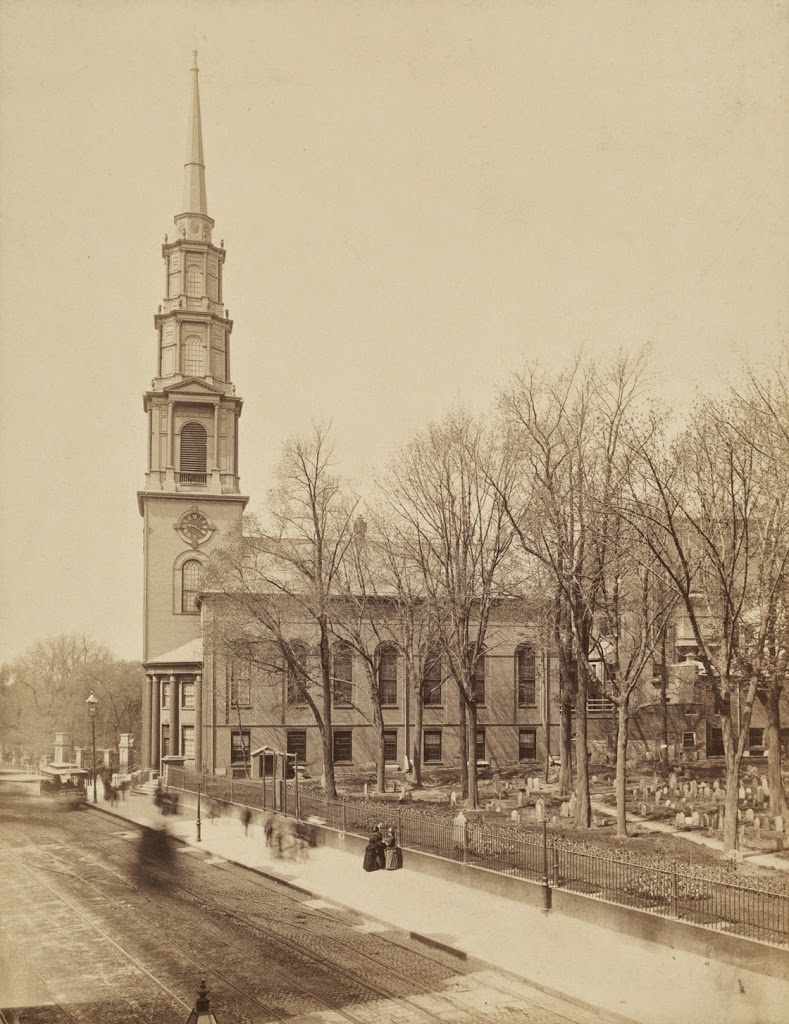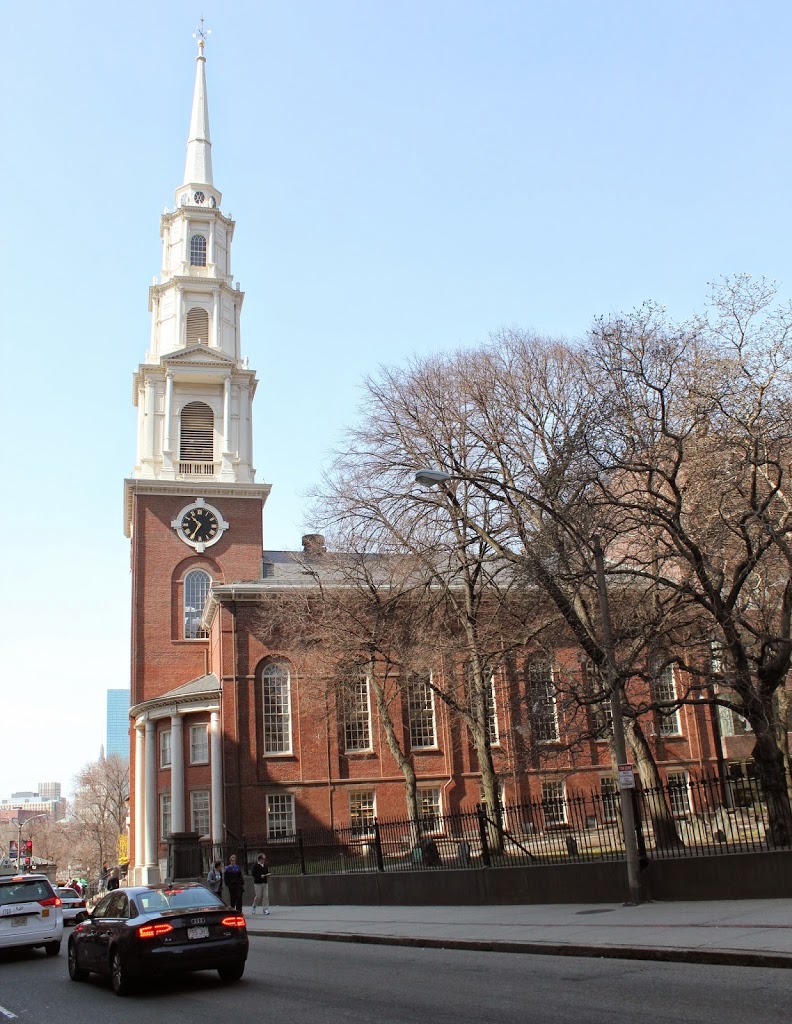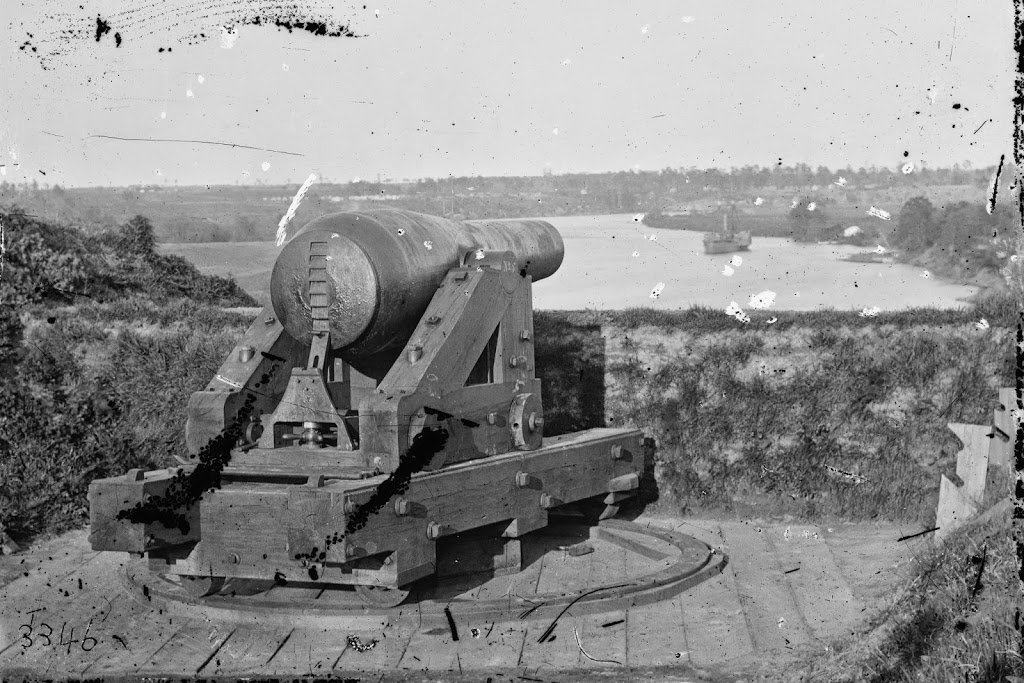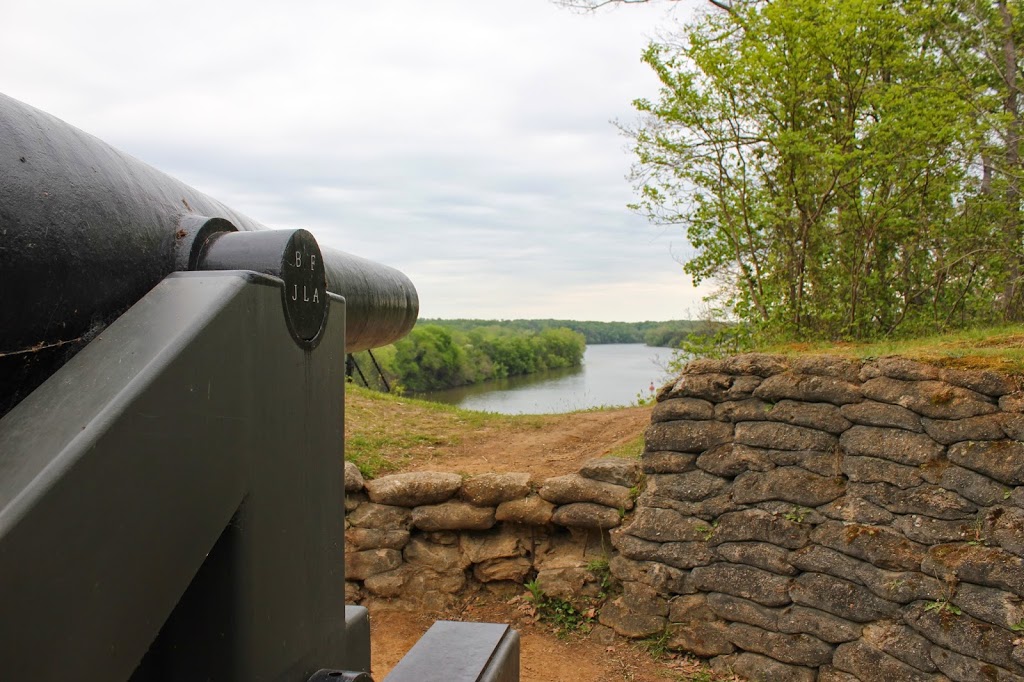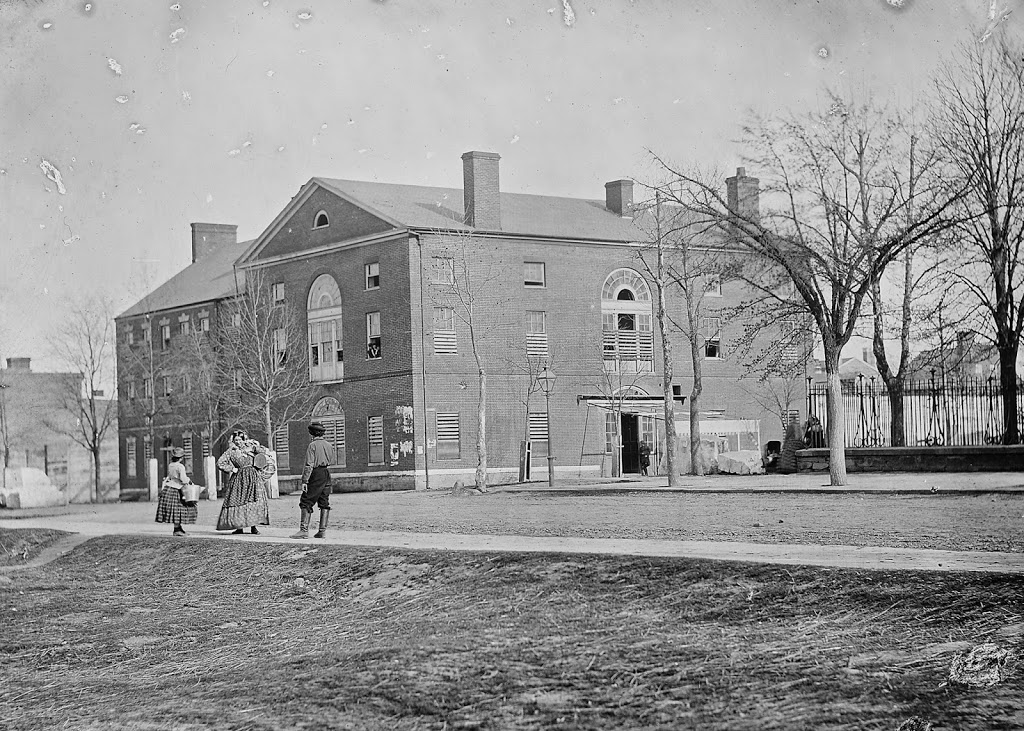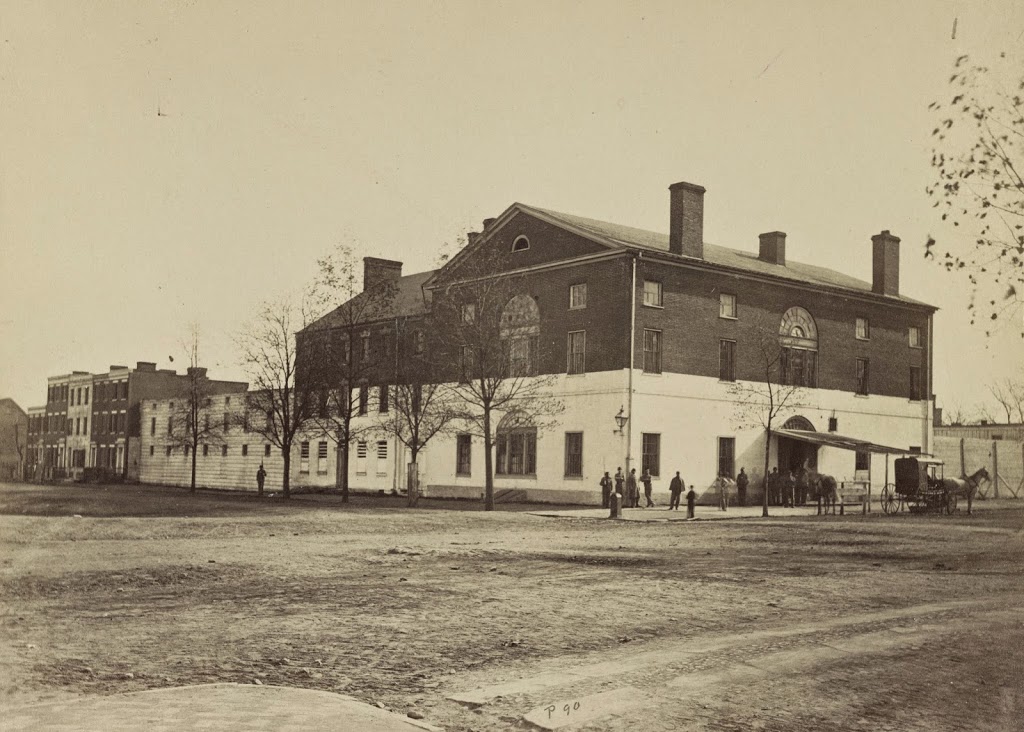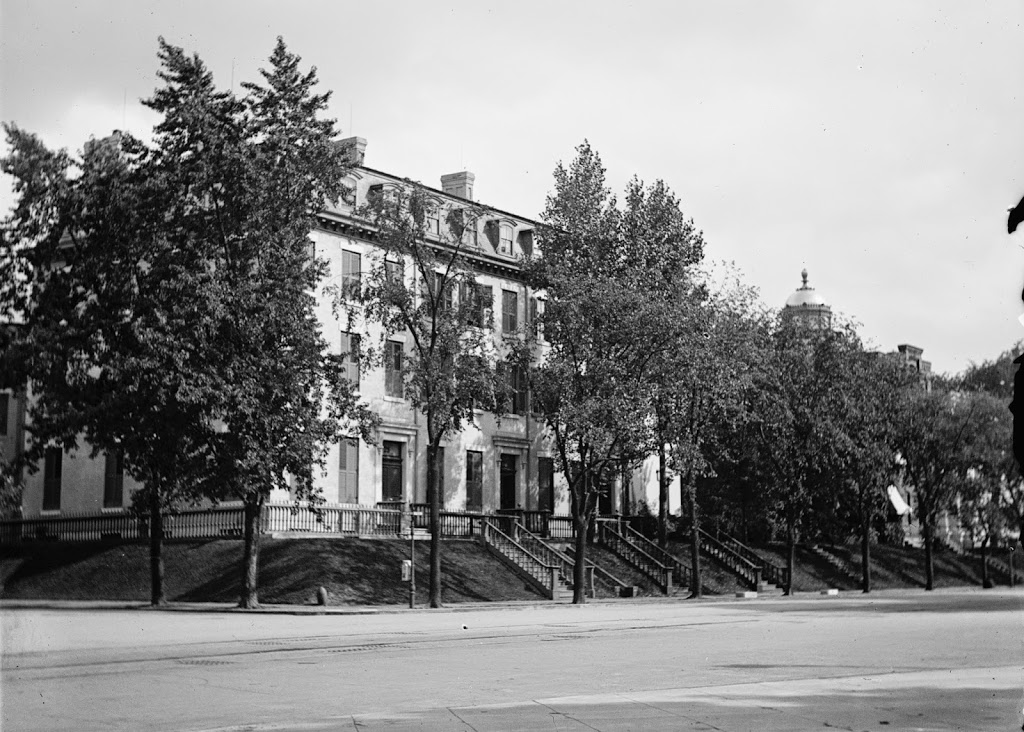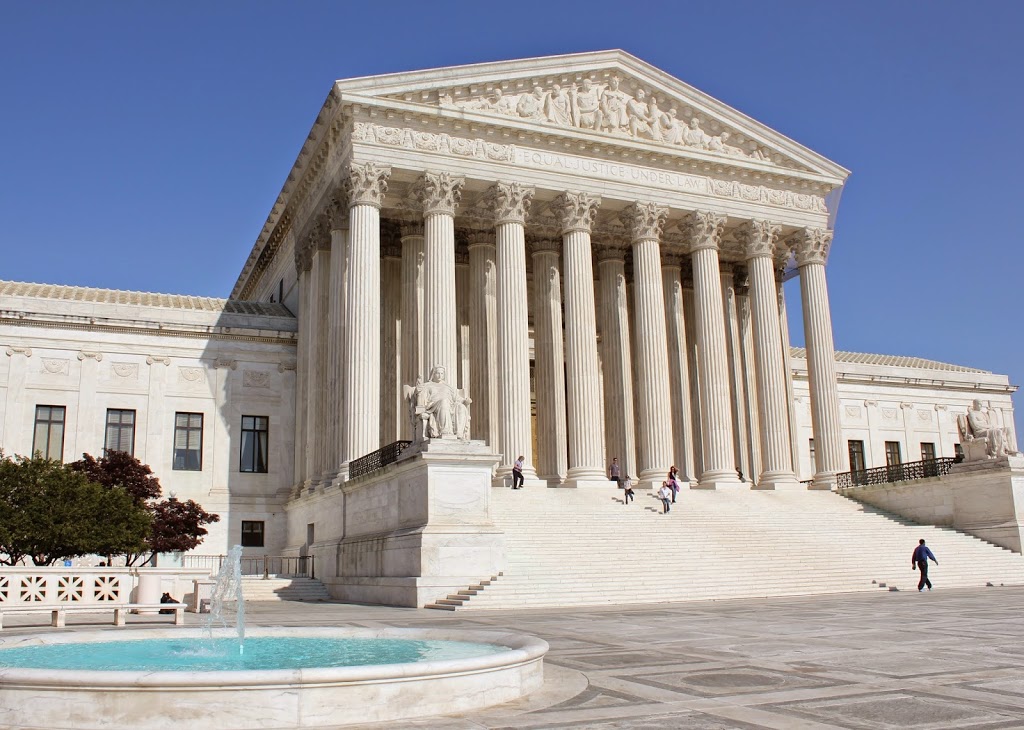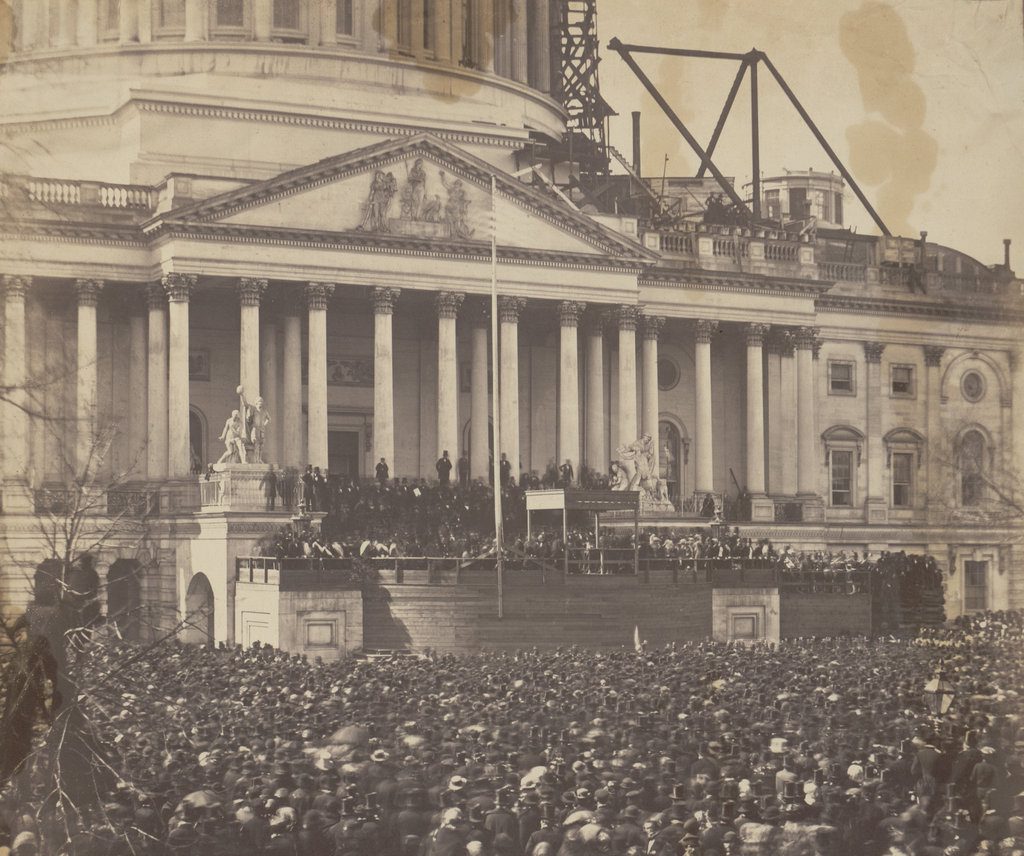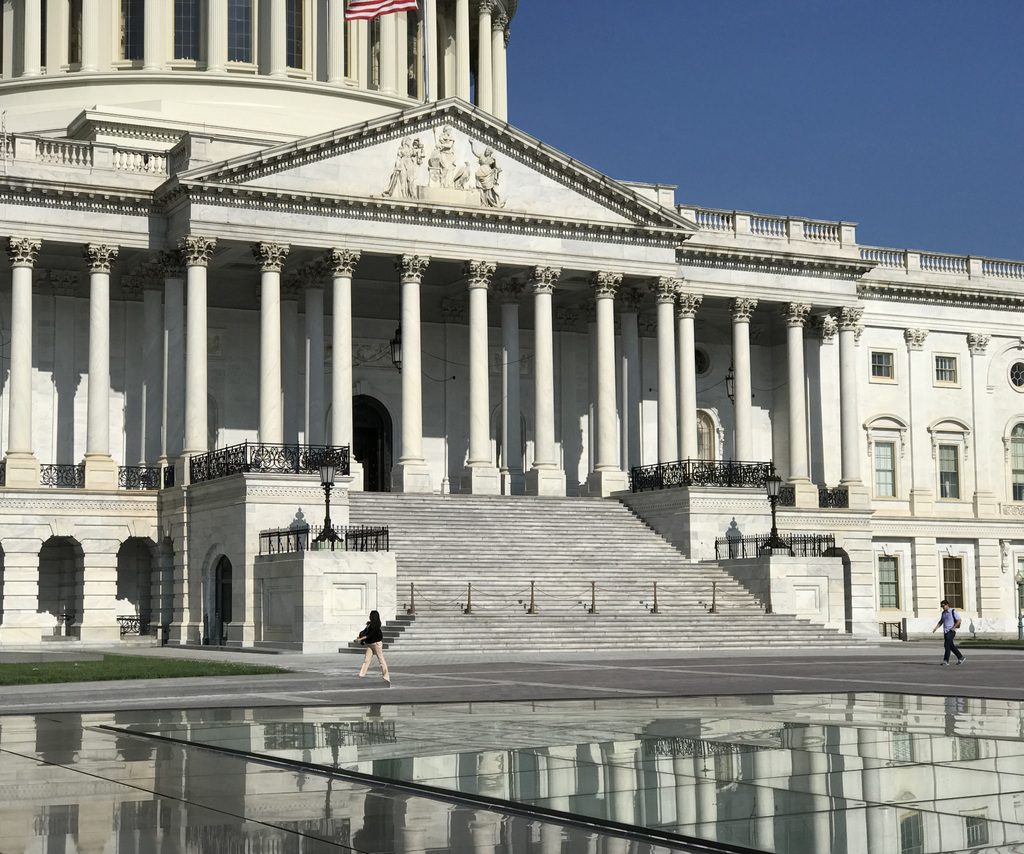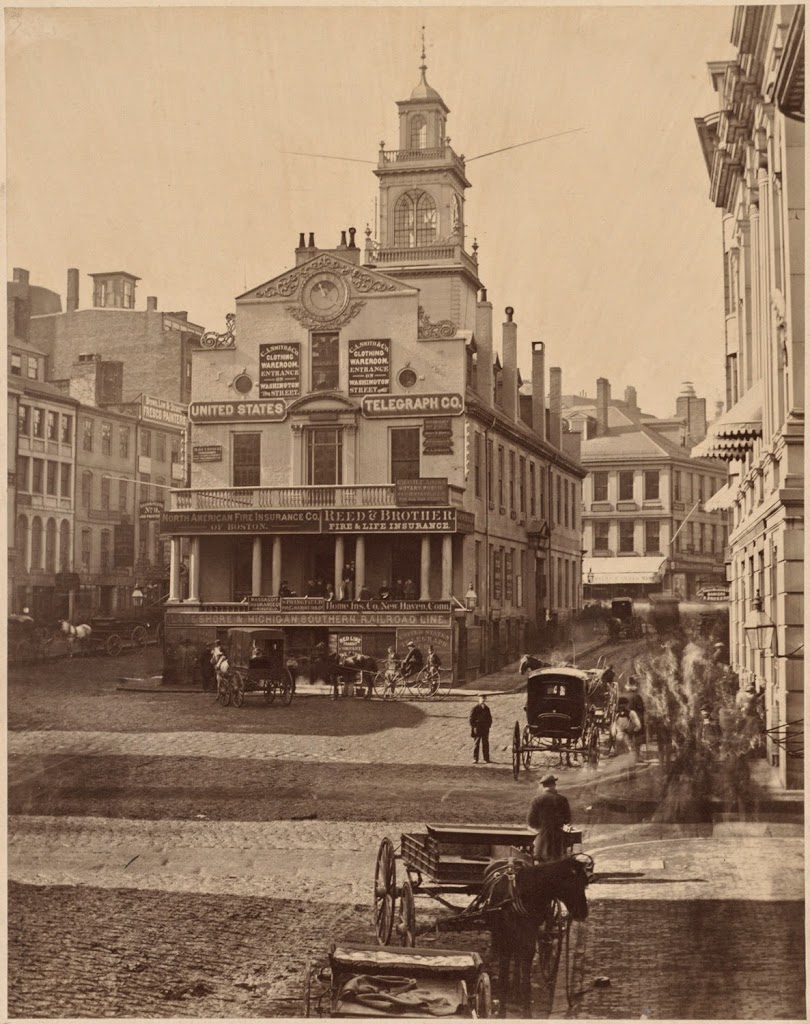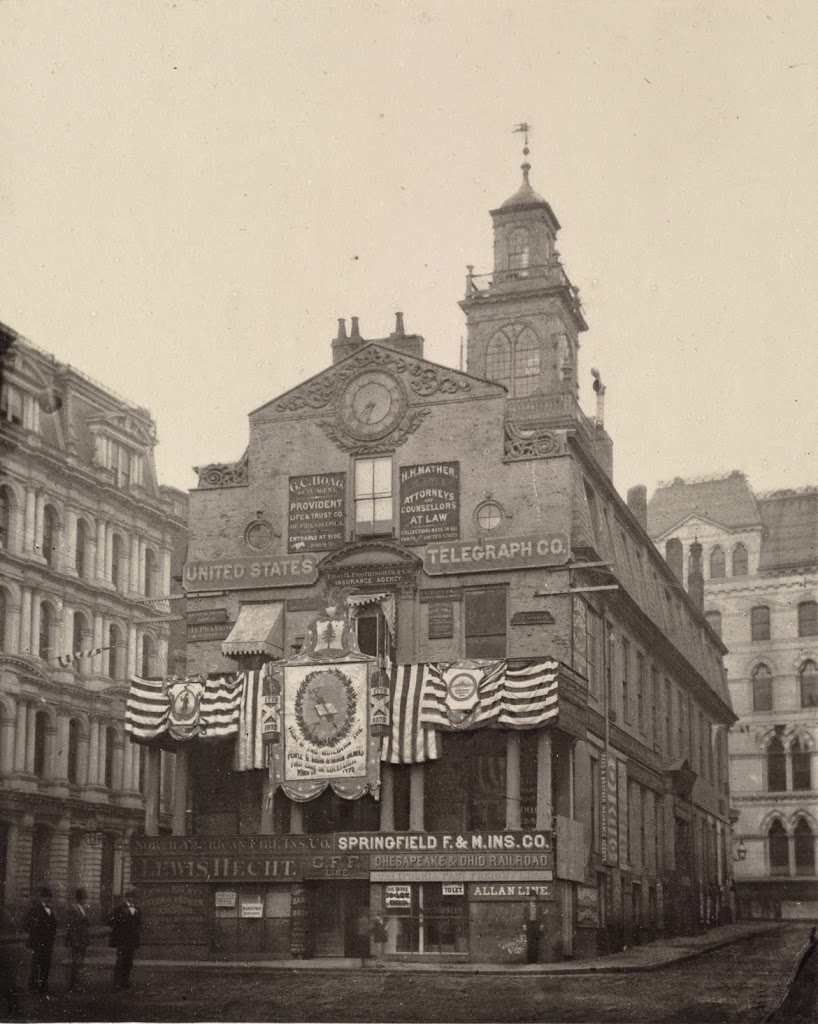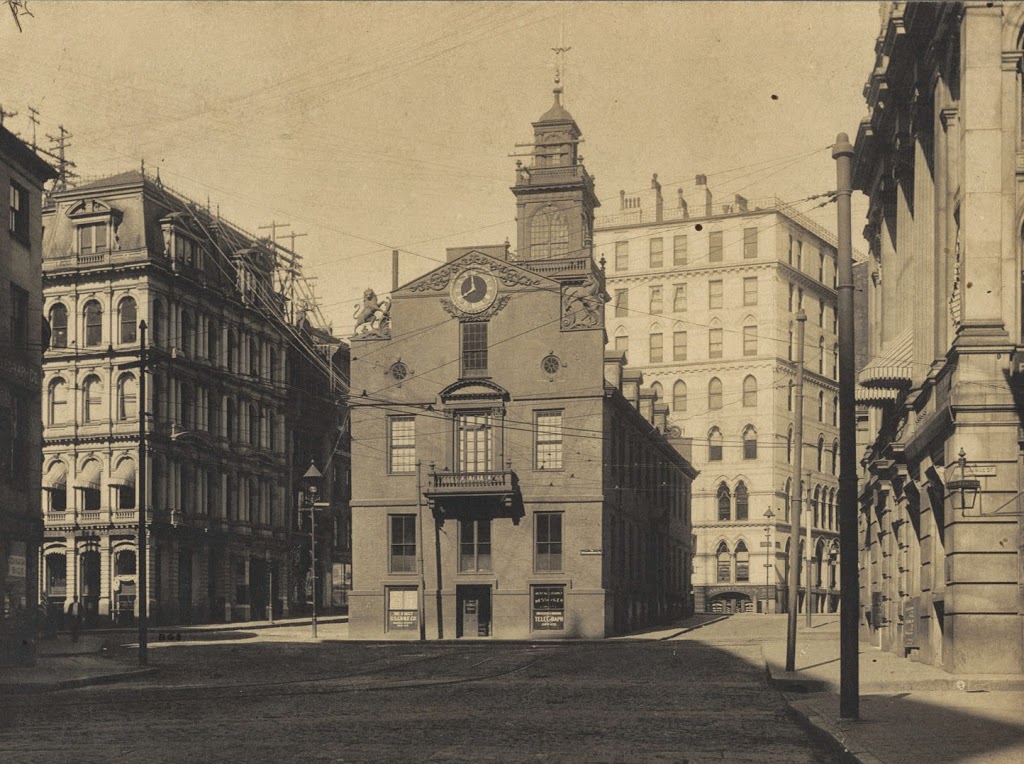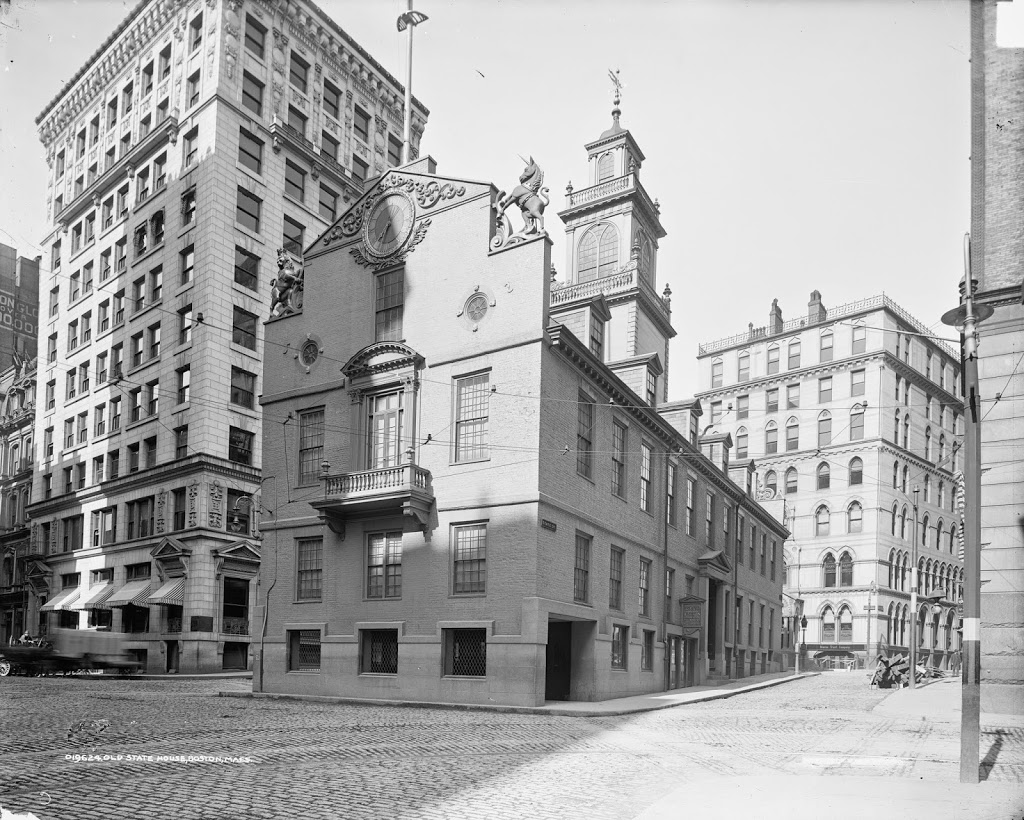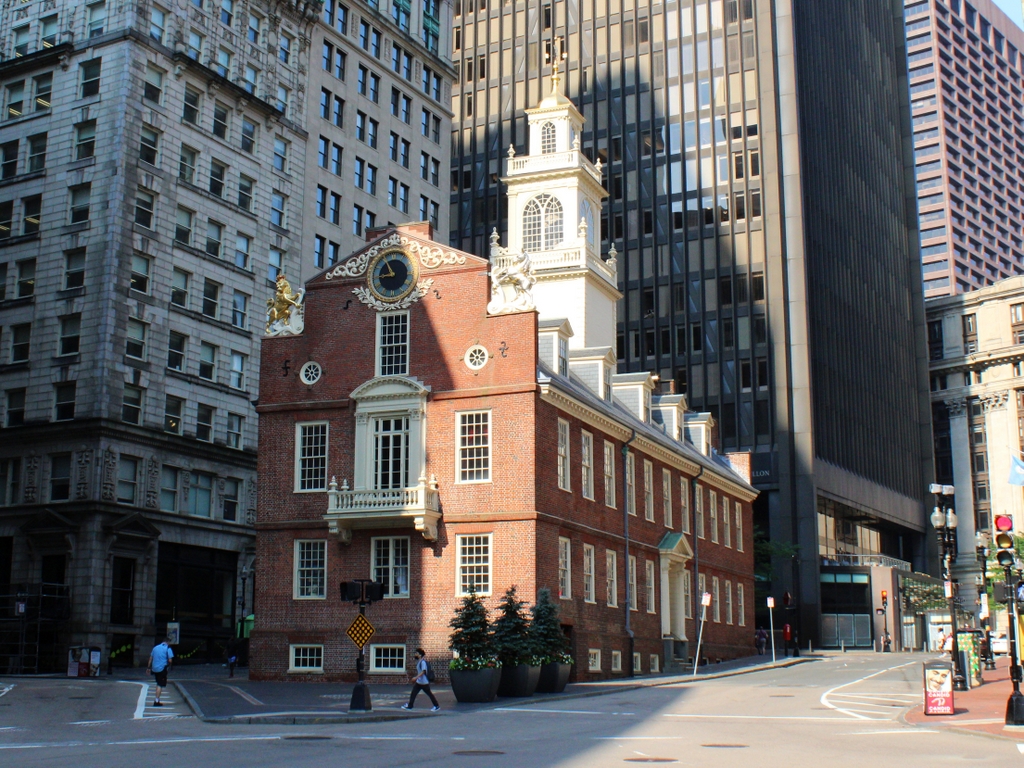Park Street Church with Old Granary Burying Ground, sometime in the 1860s. Photo courtesy of Boston Public Library.
The scene in 2011:
As mentioned in this post, which shows the view of the church from the opposite side, Park Street Church was once the tallest building in the United States, from its construction in 1810 until 1846. It remained the tallest building in Boston until around the time that the first photo was taken. The tallest building in Boston is also visible in the 2011 photo – the John Hancock tower, which was built over 100 years after the first photo was taken.
The church itself hasn’t changed much, and neither has the Old Granary Burying Ground next to it. The cemetery was opened in 1660, and many notable figures from the Revolutionary War period are buried there, including John Hancock, Samuel Adams, Paul Revere, Robert Treat Paine, and the victims of the Boston Massacre.

